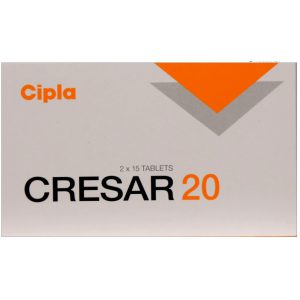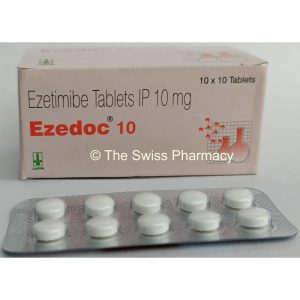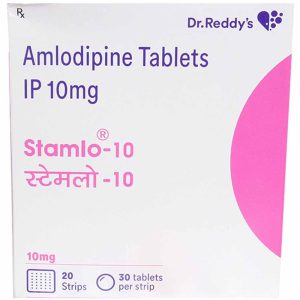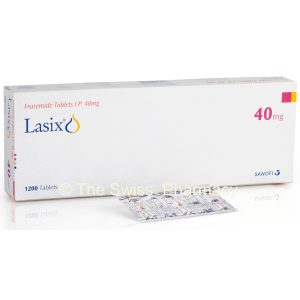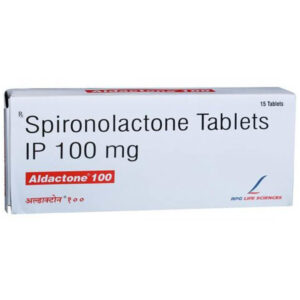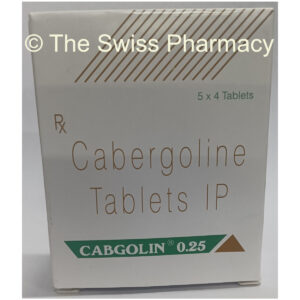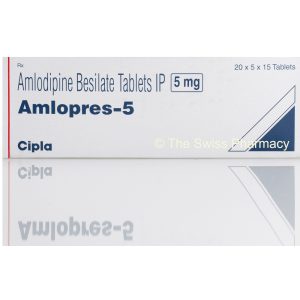Hypertension And High Blood Pressure Treatment
Hypertension or high blood pressure (BP) is an iceberg disease. Only half of those who have it are actually aware of it. Of those that are aware, only half seek or obtain treatment. Of those that obtain treatment, only half are appropriately or adequately treated.
What Is Hypertension?
There is no clear cut definition of what is normal and what is high blood pressure. The medical world therefore decides to treat those individuals having a blood pressure above which the risk of complications is significantly increased and the benefit of treatment is established.
When Or Which High Blood Pressure Needs Treatment
Malignant hypertension and sustained blood pressure over 160/100 mmHg without doubt need treatment. Blood pressure must be assessed over a period of time and one cannot rely on a single reading. Hence the decision to treat blood pressures between 140-160/90-100 mmHg will depend on the presence of risk factors, associated illnesses (e.g. diabetes) and evidence of end organ damage (blood pressure damaged retinas or kidneys).
Systolic And Diastolic Blood Pressure
The blood pressure reading is always written as a fraction. Rest assured BP has nothing to do with fractions. The numerator is called as systolic BP and reflects the arterial pressure when the heart contracts (systole).
The denominator or Diastolic BP represents the resting residual pressure in the arterial circulation when the heart is in relaxation (diastole). For many years cognizance was bestowed upon diastolic BP. However it has now been established beyond doubt that systolic pressure is the most important determinant of cardiovascular risk.
Phenomena Pertaining To High Blood Pressure
The diastolic Blood Pressure reflects the inner resistance of the arteries. Resistance rises in proportion to narrowing of these arteries by atherosclerosis. Atherosclerosis is nothing but plaque deposition on the inside of arteries thereby narrowing their diameter. These plaques can act as a nidus to thrombus or clot formation which can clog arteries reducing blood flow to the organs they supply. A classic example is atherosclerotic clogging of the ‘coronaries’- the arteries that supply the heart muscle (myocardium) leading to myocardial infarction(MI) commonly known as a ‘heart attack’.
Sometimes such clots or portions of it can break loose and rush downstream (embolus) into a narrower artery –this phenomenon is known as embolization and most commonly affects the brain’s circulation leading to Transient ischemic attacks (TIA) or CerebroVascular Accidents (CVA’s) commonly called as a Stroke.
If ‘heart attack’ or cerebral ‘stroke’ doesn’t get the hypertensive then long term damage in the form of hypertensive retinopathy or hypertensive nephropathy will cripple him. These entities constitute ‘end organ damage’ and manifest as progressive blindness or progressive kidney (renal) failure.
What Are The Types Of High Blood Pressure
Essential Hypertension ( Primary Or Idiopathic Hypertension)
Essential Hypertension is the commonest variant accounting for > 95 % of cases. The cause is unknown.
Secondary Hypertension
As the name suggests the high blood pressure here is secondary to some disorder. It could occur from any of the following:-
Renal Disease – Glomerulonephritis, Polycystic Kidneys
Autoimmune Disease – Polyarteritis Nodosa, Systemic Sclerosis
Endocrine Diseas e- Cushing’s Syndrome, Conn’s Syndrome, Pheochromocytoma.
Vascular Diseas e- Coarctation
Pregnancy – Gestational hypertension, Pre ecclampsia
Drugs – Oral Contraceptives, Estrogen replacement in Menopause
Malignant Hypertension
This refers to severe hypertension (e.g. >180/120), in conjunction with retinal damage manifesting as visual disturbance. Fibrinoid necrosis is the pathological hallmark of this condition.
It can precipitate acute renal failure, heart failure and hypertensive brain damage (encephalopathy). It is more common in young people and in blacks. Left alone 90% will die in a year. If treated 60% survive 5 years.
Symptoms Of High Blood Pressure
Unfortunately other than headache, there are usually none. That is precisely why utmost importance is given to understanding and modifying the risk factors of hypertension.
Non-modifiable Risk Factors Of Hypertension
Age and Genetic factors are Non-modifiable.
Age- Blood pressure rises with age in both sexes. Genetic Factors – Strong correlation with twins and the significance of family history show a possible polygenic inheritance pattern.
Modifiable Risk Factors Of Hypertension
Obesity- The greater the weight gain, the greater the risk.
Smoking- Cigarette smoke initiates free radical mediated arterial ‘intimal’ damage which triggers ‘plaque’ and ‘thrombus’ formation. (INTIMA – inner lining of Artery)
Salt Intake- >7-8 g/day increases the risk.
Saturated Fat- Raises both cholesterol and blood pressure.
Alcohol- High alcohol consumption raises systolic BP.
Physical Activity- Aerobic exercise reduces weight and promotes cardiac oxygenation.
Stress- The term ‘Hypertension’ itself incorporates the word ‘tension’. Anxious individuals have a significantly higher incidence of elevated BP.
Treatment Of High Blood Pressure – Non Medical Approach To Hypertension
Modifying Risk Factors- non medical treatment comprises of the following. -Reduce salt intake to not more than 5g per day.
– Cut down on Cigarettes and Alcohol or stop completely.
– Reduce saturated fats in the diet. No fried foods, fried snacks, instead go green.
– Exercise more. The dictum is, half an hour thrice a week is great for the heart.
– Behavioral therapy to reduce or cope with psychosocial stressors and anxiety.
Medical Treatment Of Hypertension
Thiazides, ACE Inhibitors, b-Blockers and Calcium Channel Blockers are the mainstay of therapy. Besides, there are others such as a-Blockers, b + a Blockers, Angiotensin Antagonists, Central Sympatholytics and Vasodilators.
Various combinations of the above agents are available but cannot be attempted without a doctor’s consultation as some of these can kill.
Calcium Channel Blockers (Adalat/ Amlopres/ Stamlo)
Calcium Channel Blockers work to prevent calcium influx into the myointimal cells of blood vessels, thereby relaxing or dilating arteries. This leads to a reduction in the total peripheral resistance and a fall in BP.
They are categorized into various types of which Nifedipine (PROCARDIA), Verapamil (ISOPTIN) and Diltiazem (CARDIZEM) are the prototypes.
The Nifedipine group is the most potent and commonly prescribed class of Calcium Channel Blockers. Amlodipine ( Norvasc / Amlopres ) is the most distinct congener of this class on account of its excellent ability to avoid side effects such as palpitation, flushing, headache and postural dizziness. These agents are best suited in elderly, Isolated Systolic Hypertension, Asthmatics, young and active hypertensives and migraine patients. Caution must be exercised in Ischaemic Heart Disease, Prostate enlargement and post MI cases. Watch the presentation below for more details on generic Norvasc tablets.
Ace Inhibitors (Vasotec/Prinivil/Capoten)
Angiotensin Converting Enzyme Inhibitors work by blocking the renal enzyme that forms angiotensin II. These are best suited for younger active patients, Diabetics with Nephropathy, Co existing heart disease, Gout and Dyslipidemia. They are contraindicated in renal artery stenosis, pregnancy and hyperkalemia.
B- Blockers (Tenormin/Co Reg/Lopressor)
These drugs work by blocking the sympathetic b receptors in both the heart and the blood vessels causing reduced heart rate and vasodilation which act synergistically to reduce BP. These agents are best suited in anxious patents, post heart attack (MI), Angina and offers the advantage of low cost therapy.
Atenolol (TENORMIN) is gainfully combined with the calcium channel blocker Amlodipine as AMLOPRES – AT. b-Blockers are to be avoided in heart failure (except carvedilol /CO REG), heart rhythm abnormalities such as AV Blocks, Asthmatics, Diabetics and those with an abnormal lipid profile.
Thiazides (Nadolol/Hydrodiuril/Esidrix)
This Diuretic causes reduction in the total peripheral resistance through persistent sodium and water loss. Favorably used in Elderly, Obese, patients with renal disease and Isolated Systolic Hypertension. Notable Side effects include Postural fall in blood pressure and hypokalemia.
These are to be avoided in young patients, Pregnancy, diabetics and those with an abnormal lipid profile.
Antihypertensives In Pregnancy
Methyldopa (ALDOMET), Nifedipine (ADALAT) and Labetalol (NORMODYNE/ TRANDATE) are safe for use in pregnancy induced hypertension.
High Blood Pressure Treatment – Concluding Remarks
Hypertension, being bereft of any symptoms until it is too late, merits emphasis on preventing or modifying its risk factors.
A multi modal approach incorporating both, lifestyle changes and combination drug therapy, are vital. Not only is salt restriction important, but motivating the patient to ensure lifelong compliance with medication is equally vital.
